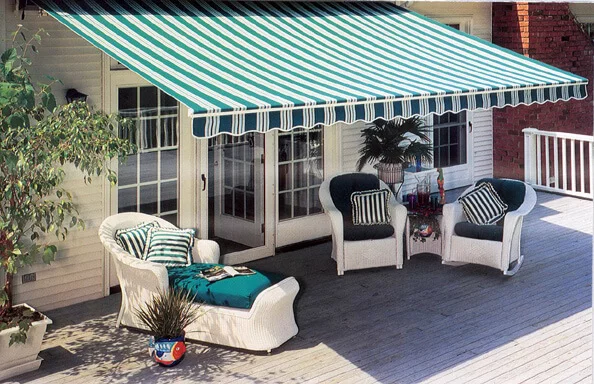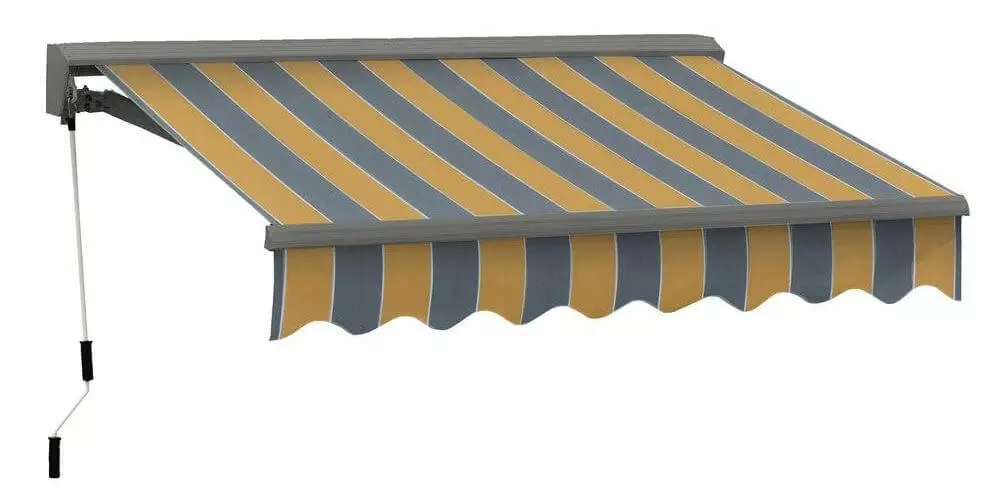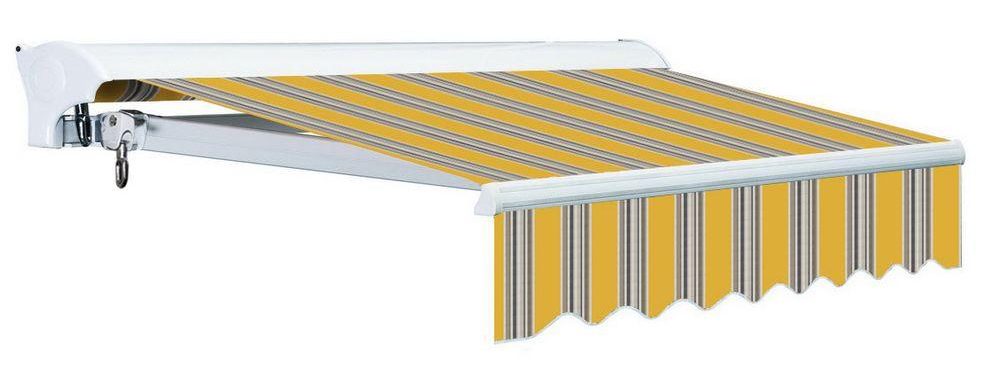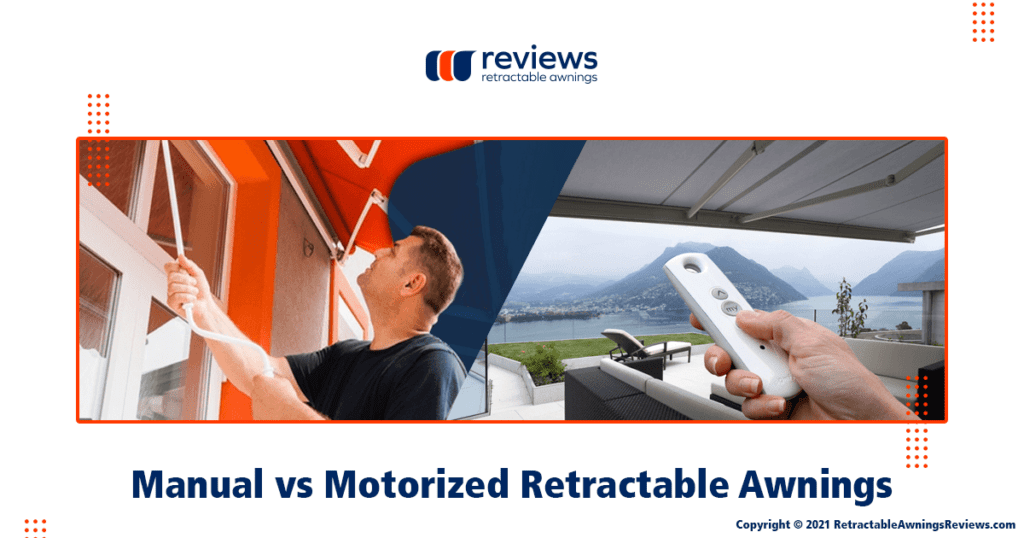
What is better, a retractable motorized awning or manual awning? Both provide shade and light rain protection (varies by fabric used), but there are some important differences to know.
In this blog post you’ll discover:
- which retractable awnings are manual and which are motorized;
- how a motorized retractable awning differs from a manual one;
- what the advantages and disadvantages are between a manual vs motorized retractable awning.
Additionally, you’ll discover other information that may influence your choice.This piece is aimed at the home or business owner who is trying to decide if a manual or motorized retractable awning is best for them. Understanding the differences and advantages will assist you in your decision.

Manual Retractable Awnings
A manual retractable awning mounts on a wall, soffit/eave/overhang or roof above a window, doorway, or patio or deck of a house, business or other permanent structure. It can also attach to the side of a vehicle like an RV or bus. It has a detachable crank that a person turns by hand to extend or retract the awning; hence, the term manual. The crank hooks or latches into place and is rotated left or right to turn the roller mechanism which extends or retracts the fabric awning. A winch type system is used to extend and retract the fabric or vinyl awning. The crank is usually located on the left of the awning housing (the right when facing the wall it is mounted on) but can be ordered reversed on custom made retractable awnings. The larger the awning and the further it extends, the more rotations and effort needed to fully open or close the awning.
The manual awning can be extended or retracted at your convenience. If you want full shade, extend it fully; only extend partially for partial shade. The awning reduces exposure to the sun, UV rays and glare in the space beneath it, and also into the building. This helps reduce heat, which reduces the amount your air-conditioner needs to work.

Motorized Retractable Awnings
A motorized retractable awning has an electric motor that replaces the manual crank. The push of a button or the flip of a switch is all it takes to have the awning open or close. The gear on the motor spins faster than the crank and more quickly (and quietly) turns the roller mechanism which extends or retracts the awning. The ease of operation means you’re more likely to use your outdoor space.
A motorized awning can be automated using wall switch, remote control transmitter, timers, a key switch or an app or with sensors. Solar sensors can be installed which will open the awning to keep the sun, UV rays and glare from entering through windows or doors even if you’re not home.
Rain sensors will close the awning to keep the fabric dry or if enough pitch/angle is not possible or open the awning to keep patio/deck furniture and floor dry. There are also anemometer wind sensors and motion sensors available that will close the awning to prevent it from being damaged. As a bonus, if the power goes out, there is a crank known as backup manual override available that can hook or latch into place and manually open or close the awning.
Retractable vs Fixed Awning: What are the Differences?
The awning frame for both motorized and manual retractable awnings is the same; they are made of lightweight metal (usually aluminum or steel), and rigid plastic parts such as end caps. However, some motorized awnings now have telescoping arms instead of folding lateral support arms standard motorized and manual awnings use. Here are some things to consider:
Manual Retractable Awnings
- Doesn’t require electricity.
- Less expensive to operate.
- Less expensive to purchase unless the manufacturer is offering a free motor as some do.
- Installation could be slightly less expensive.
- No wiring or electrical hazard.
- Some manual awnings have removable vertical support posts or poles for added wind support.
- DIY installation.
Motorized Retractable Awnings
- Has a motor, and therefore requires electricity.
- Available with an optional backup manual override in case of loss of electricity.
- Works at the flick of a switch or the push of a button.
- No knuckle bashing turning a crank.
- No crank hanging around.
- Easier for seniors and the physically disabled to operate.
- Easy to open if your hands are full.
Understanding the differences, advantages, and disadvantages of manual vs motorized retractable awnings will definitely help you choose which is best for your home or business. Make sure to check out the testimonials and reviews on our website before making a final choice.
